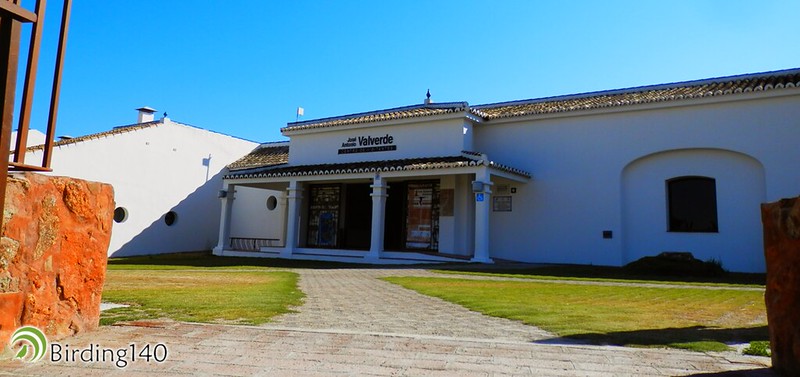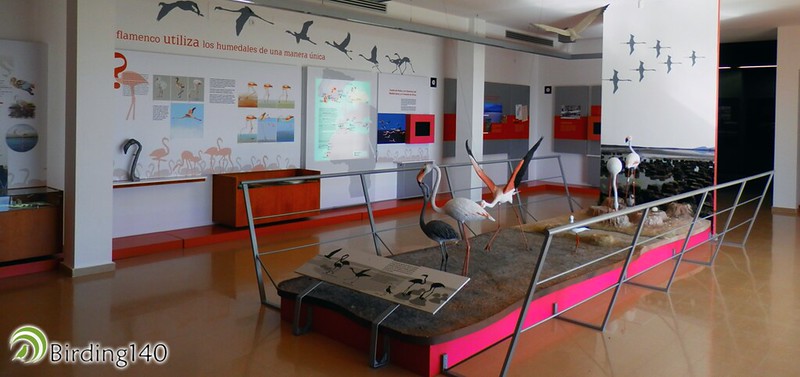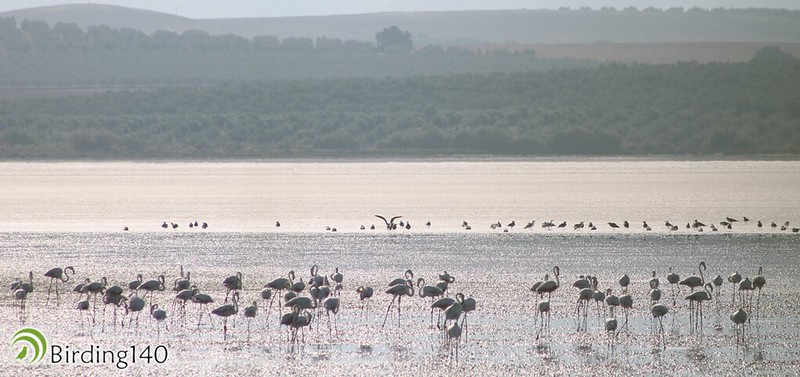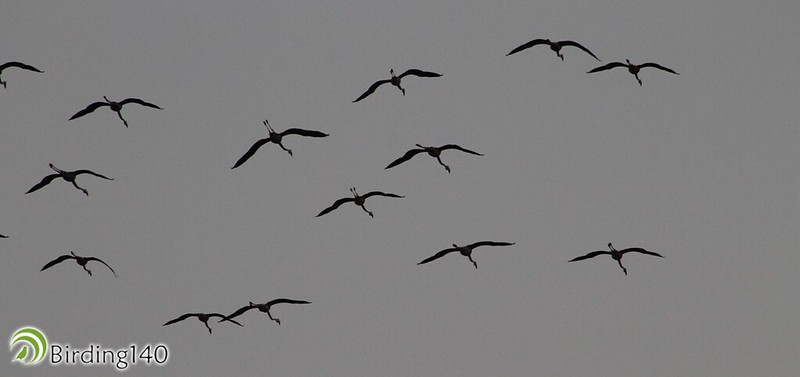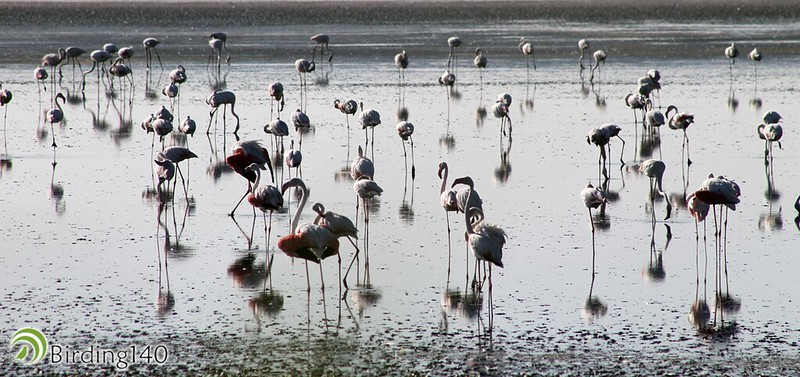The lake of Fuente de Piedra is, apart from Gallocanta, the largest saline wetland in the Iberian Peninsula. It is an exceptional location not only because of its extension, but also due to the variety of birds that can be found there. Nothing less than 170 species visit Fuente de Piedra during the year, the Greater Flamingo (Phoenicopterus roseus) being its characteristic species. Along with The Camargue, in France, it is the only place in Western Europe where the flamingo breeds on a regular basis.
How to get to Fuente de Piedra
The lake of Fuente de Piedra is located in the heart of Andalusia, one hour on the motorway from Granada and Malaga, and less than two hours from Seville and Cordoba. Once we are in the village of Fuente de Piedra, we will drive across the town centre through the Avenida de Andalucía, and about 100 metres away from the last houses, we will find the access to the interpretation centre.
José Antonio Valverde Visitors Centre
The visitors centre of the lake of Fuente de Piedra, a renovated old Andalusian mansion, explains in its indoor exhibition the annual cycle of the Mediterranean wetlands: rainy autumns, flooding winters, high sunshine springs and summers with total or nearly total evaporation of the waters.
In the main room, the Greater Flamingo plays the main role. This room, which has a large window facing the lake, shows how flamingos have adapted their reproductive cycle to the annual cycle of the lake. It also shows the importance of the annual bird ringing day of Fuente de Piedra. Every July, a day is chosen for the ringing of about 600 flamingo chicks. At down, hundreds of volunteers start capturing the chicks, which are returned to the lake after being ringed. Bird ringing makes it possible to know where the flamingos go when they learn to fly and they scatter over the Mediterranean and the north of Africa: Doñana, Villacañas, Santa Pola, the Ebro Delta, Mauritania, Tunisia, Senegal, Italy, the Middle East…
The lake of Fuente de Piedra
During the summer, the interpretation centre organizes guided visits to the lake during sunset. Of course, we didn’t hesitate to participate. Our guide was Marta, one of the people who best know Fuente de Piedra, and our touring companions were the nature-lovers Ana (from Asturias) and José (from Malaga).
Fuente de Piedra is spectacular, even when the waters have evaporated. A thin layer of salt works know as a mirror instead of the sheet of water that reflected the light of dusk some weeks ago. It is really difficult to appreciate whether the lagoon is flooded or not.
We left at 7 p.m. towards the Mirador del Palo viewpoint. From there, we could admire a group of adult flamingos trying to filter the reduced sheet of water that was formed due to the discharge of treated water. Among the adults, we could distinguish a chick that probably had just carried out its first flight from the nursery to the centre of the lake.
We could also observe a Black-headed Gull, some Black-winged Stilts and, surprisingly, a Lesser Flamingo. For the last three or four years, the flocks of flamingos returning from Africa have usually been coming together with a partner of Lesser Flamingo. This year, three couples have arrived and they have managed to breed successfully. It is intriguing to think whether in three years’ time, when the first Lesser Flamingos are adults, they will return to their homeland to breed.
The sun started to descend gradually on the horizon and, within a second, the flamingos decided to reunite with their chicks, taking flight towards the interior of the lake. It was time to move to the other shore. We went to the Mirador de Cantarranas.
From this viewpoint, you can observe the little freshwater lagoon of Cantarranas and, behind it, the lake of Fuente de Piedra with the village in the background. We could enjoy the Marsh Harriers that went to the roost, a little flock of five spoonbills, or even listen to a Little Owl as the light was falling over Fuente de Piedra and the sky turned from light blue to orange, pink, dark blue… As we were watching the flight of the harriers over Cantarranas, we started hearing a murmur. Ajonk! ajonk! Could it be a flock returning to the lake? We looked right and left without moving, but we couldn’t see anything. Perhaps they were flying low over Fuente de Piedra and our eyes couldn’t appreciate them. But we could hear the murmur, which meant they were close indeed. When… ajonk! ajonk! A flock of about a hundred flamingos flew over our heads. From our back, they were heading towards Cantarranas. It was spectacular!
The sun continued descending and darkness started embracing the lagoon. But before night had fallen, Fuente de Piedra bid us a farewell with the flight of a new flock of flamingos that went across the lake from the nursery to the south shore. They were probably heading towards Doñana to feed themselves during the night.
Our first visit to Fuente de Piedra was a great birding experience that we really enjoyed. We wish we can return soon, maybe to see the cranes that arrive from the north of Europe during the autumn.

